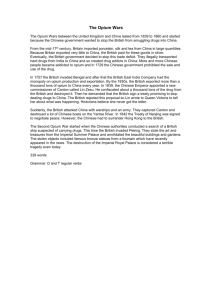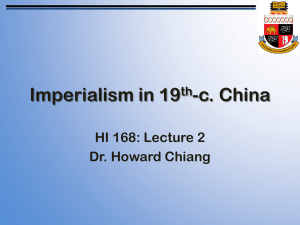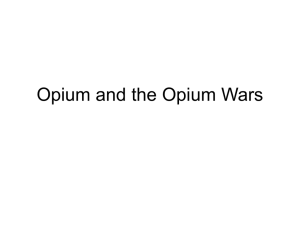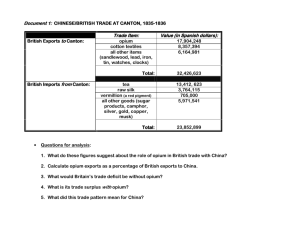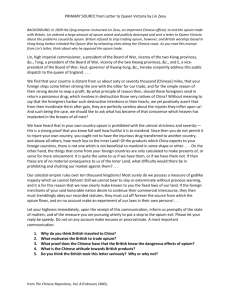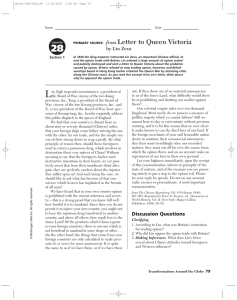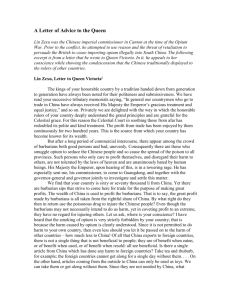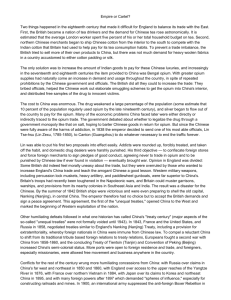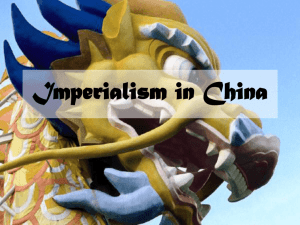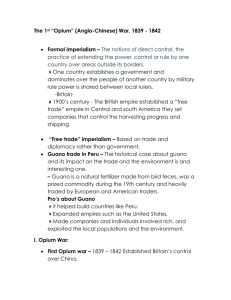SINO-WEST
advertisement
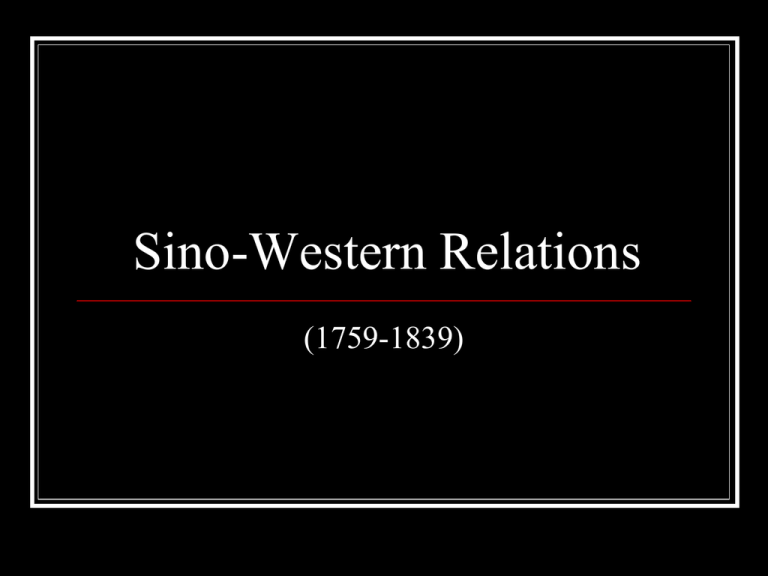
Sino-Western Relations (1759-1839) Overland Contacts Russian Expansion Office of Border Affairs (Lifanyuan) Treaty of Nerchinsk (1689) Treaty of Kaikhta (1723) Canton System of Trade 1759-1841 British East India Company (BEIC) Cohong Merchants Monopoly on trade Responsible for foreigners No Direct Communication with Chinese government Trading Season (October to January) British Complaints Trade restrictions Government corruption No representation in Beijing Chinese laws too harsh Lady Hughes Affair, 1784 British Diplomatic Missions Marcartney Mission (1793) Amicable but ineffective Amherst Mission (1816) Discordant and ineffective Road to Opium War (1839-1842) Importance of Chinese Tea to British Government Increasing Opium exports after 1800 to balance trade Abolishment of BEIC, First British Superintendent of trade, Impact of Illegal Opium Trade on China Official corruption Drug addiction Economic impact Silver – copper imbalance Chinese Response to Opium Trade Lin Zexu Daoguang Emperor (1821-50) Legalize or Suppress 1836 Lin Zexu (Commissioner Lin) 1839 Reason, moral suasion, coercion Attack opium trade Treatment of addicts Blockade foreign merchants Opium War Destruction of the Opium End of BEIC monopoly 1834 British Government Rep in Canton Lord Napier, Deputy of British Crown Destruction of Opium Hostilities Phase One Lin Zexu—Charles Elliott Hostilities Phase Two Qishan—Henry Pottinger Sanyuanli Incident Treaty of Nanjing 1842 Ceded Hong Kong in perpetuity Opened Five new ports: Canton, Xiamen, Fuzhou, Ningbo, Shanghai Fixed tariff Equality in correspondence Indemnity Abolish Cohong Signing of the Treaty of Nanjing Treaty Port System Trade at Five Open Ports Most favored nation for foreign powers Extraterritoriality Arrow War (1856-1860) “Second Opium War” Treaty of Tianjin Residence in Beijing Preaching Christianity 11 more ports including Yangzi River Ports Legalize opium

